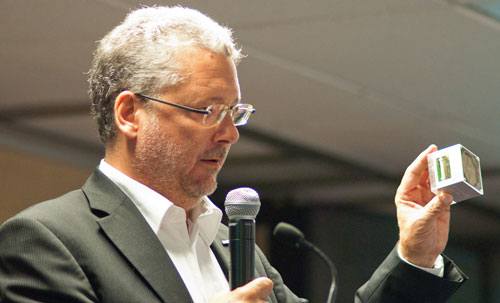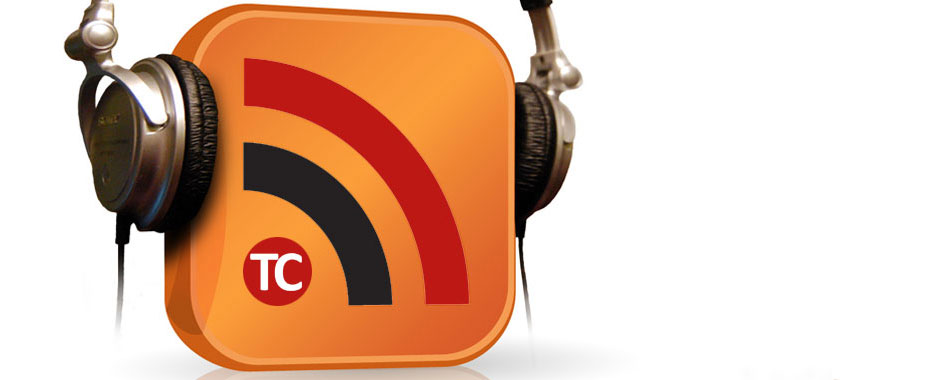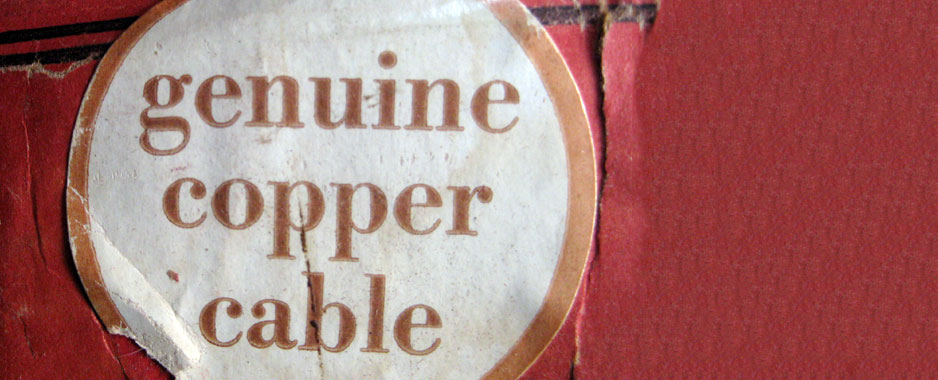
Imagine a cellular base station that could fit in your pocket, or be installed on a lamppost or a bench in a street with poor reception?
It may sound far-fetched, but it’s not. Despite its diminutive proportions, the Lightradio Cube, developed by Bell Labs in Germany, is said to have greater capacity and functionality than far larger base stations and costs less to install, is easier to maintain and, naturally, is far less of an eyesore.
The Lightradio Cube is just one of Bell Labs’s range of Lightradio products. It shrinks the enormous power amplifiers and other components found in existing cellular base stations, making it possible to place on signboards, bus stops and anywhere else where connectivity is required.
Rainer Fechner, head of Bell Labs in Germany and a member of the management board of Alcatel-Lucent, says the Lightradio Cube — which fits in the palm of a hand — not only achieves the necessary power amplification but is also much more energy efficient.
“Communications networks could be 10 000 times more energy efficient than they are today,” Fechner says. “At present, we measure improvements in percentages and, while a 50% improvement sounds good, in this light it looks very disappointing.”
The Lightradio Cube includes the radio components of a base station, namely the amplifier, radio, diplexer and passive cooling. The processing components come in a similarly small unit that can be placed with the cube.
The system supports 2G, 3G and LTE transmission, meaning it can replace existing base stations. Bell Labs claims networks that install Lightradio equipment will cut the total cost of operating a network by more than 50% over three years.
Smaller antennae are also an integral part of the Lightradio family, and because these are attached to the Lightradio Cube via fibre-optic cable rather than the coaxial cable that traditionally runs from a processor to an amplifier and in turn to an antenna, energy usage is halved, it claims.
In areas with more network demands than others, multiple Lightradio Cubes can be installed together to handle load, which is where the “cube” name comes into play – the idea is that any number of units can be stacked together, much like building blocks.
A further example of the potential to increase connectivity and efficiency simultaneously is the “femtocell”. Traditionally used to improve indoor capacity and coverage for connectivity to cellular networks, Fechner says Bell Labs is also designing units that can control things like lights, heating systems and alarms in homes and offices by turning them automatically off or on when a particular Sim card is detected.
So, you could come home to a house that turns on the lights as you enter a room, and turns them off as you leave.
He says another potential application for femtocells is in indoor navigation in places like shopping malls and airports where GPS doesn’t work and where retailers or service providers might benefit by being able to guide prospective customers and provide them with information about store locations and products. — Craig Wilson, TechCentral
- Subscribe to our free daily newsletter
- Follow us on Twitter or on Facebook




